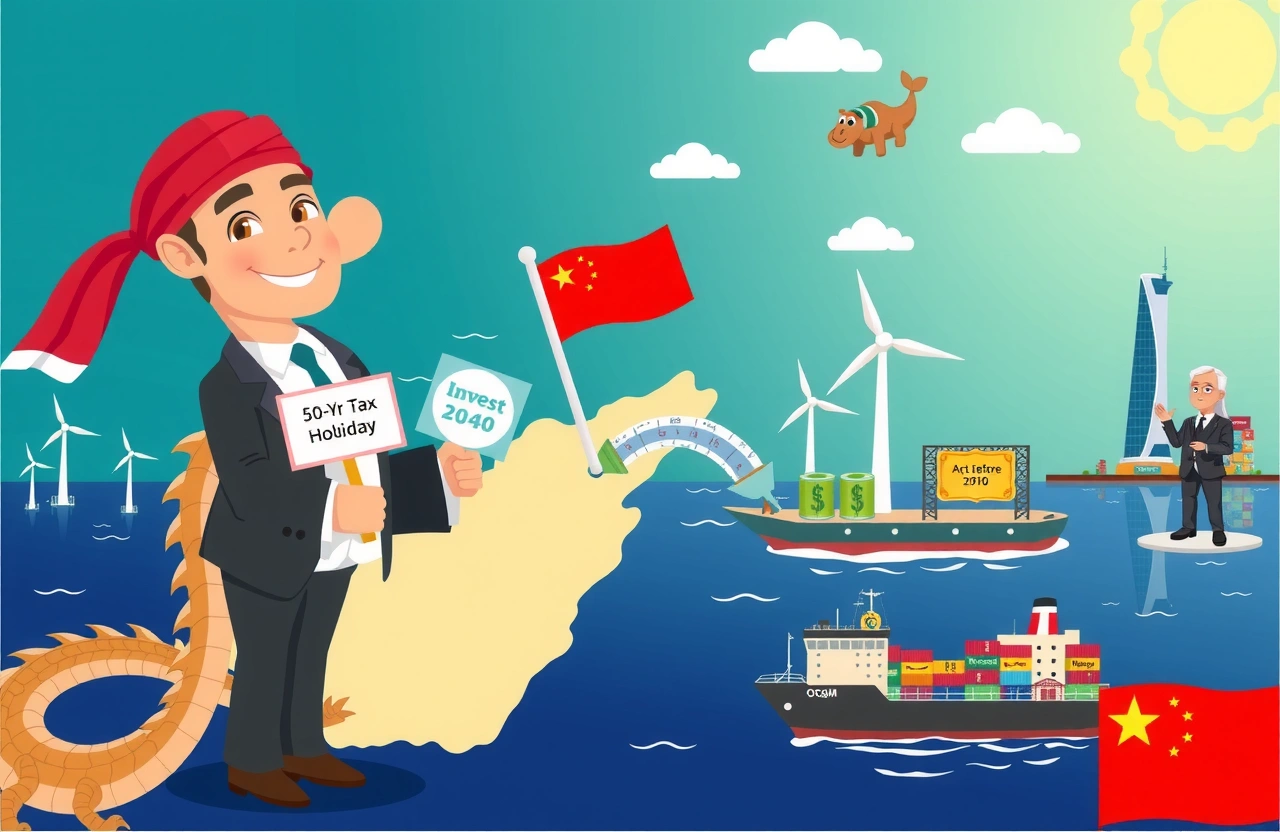Oman’s Strategic Position in the China-Middle East Economic Partnership
When Jiang Ziyao, Deputy Director of Oman Investment Authority’s Future Fund, recently declared Oman would become “another hot soil” for Chinese enterprises, he spotlighted a strategic shift in global investment patterns. At the 2025 China Enterprise Global Expansion Summit in Shenzhen, industry leaders examined why this Middle Eastern nation stands poised to attract significant Chinese capital. Nestled between the Arabian Sea and the Gulf of Oman, this politically neutral nation offers unique advantages through its Special Economic Zones, bilateral agreements with 26 countries including China, and economic diversification plans under Vision 2040. With power costs matching China’s most affordable provinces and natural gas prices 30% below global averages, Oman presents compelling operational savings. As supply chains diversify beyond traditional hubs, Oman emerges as an increasingly attractive investment hotspot for forward-thinking enterprises.
Decoding Oman’s Investment Incentives
Unparalleled Tax Advantages
Oman’s tax framework stands out regionally for foreign investors:
– Free Trade Zones offer 25-30 year tax holidays covering corporate tax, VAT, customs duties, and personal income tax
– Mainland operations benefit from 15% corporate tax (among GCC’s lowest) and 5% VAT
– Zero restrictions on capital repatriation or currency conversion under Oman’s elimination of foreign exchange controls
– Stable Omani rial (pegged to USD) minimizes currency risk for international transactions
Land Access and Property Rights
Unlike many neighboring countries, Oman permits:
– 50-year renewable land leases within all Special Economic Zones
– Foreign ownership of commercial property outside restricted zones
– Streamlined approval processes through Invest Oman’s one-stop shop for licenses
Thriving Sectors for Chinese Investment
Renewable Energy Leadership
Oman targets 30% renewable energy by 2030, creating enormous opportunities. Chinese firms already lead this transformation:
– Goldwind Science & Technology’s $300 million wind farm in Dhofar
– Zhongke Electric’s green hydrogen infrastructure projects
– Solar energy ventures leveraging Oman’s 3,500 annual sunshine hours
Logistics and Industrial Manufacturing
With ports on the Indian Ocean and Arabian Gulf, Oman serves as a natural Belt and Road hub:
– Duqm Port’s integrated economic zone offers direct access to East African and South Asian markets
– 50% cost advantage in industrial electricity versus UAE neighbors
– Special Economic Zones enable duty-free imports of manufacturing raw materials
Labor and Operational Advantages
Competitive Workforce Economics
Oman delivers substantial labor savings:
– Skilled foreign worker permits processed within 7 business days
– Local labor costs 25-40% below UAE/Qatar averages according to PwC benchmarks
– Government-subsidized technical training programs for Omani employees
Resource-Based Cost Benefits
Operational expenses remain remarkably competitive:
– Industrial electricity at $0.045/kWh (comparable to China’s Sichuan province)
– Natural gas priced 30% below international market rates
– Strategic water reserves supporting heavy industry needs
Navigating Market Entry
Legal Infrastructure and Treaties
Oman’s pro-investment legal framework includes:
– Bilateral investment treaties with China (2018) and 25 other nations
– World Bank-ranked #3 in MENA for investor protection
– The AAA-rated sovereign wealth fund ensuring economic stability
Strategic Entry Pathways
Successful market penetration strategies involve:
1. Utilizing free zones for initial manufacturing setups
2. Partnering with local agencies like Invest Oman for license facilitation
3. Leveraging China-Oman Industrial Park incentives in Duqm
4. Tapping Export Credit Agency support for project financing
Emerging Success Stories
Chinese enterprises already demonstrate Oman’s viability:
– Hayout Logistics established a $200 million regional distribution hub near Sohar Port
– Ningxia Construction Engineering Group’s infrastructure projects
– Pharmaceutical manufacturer improving healthcare access
These pioneers prove Oman’s transformation into a legitimate investment hotspot through their ROI metrics and expansion plans.
Vision 2040: Oman’s Economic Transformation Blueprint
The national diversification strategy creates predictable growth pathways:
– $7 billion allocated for tourism infrastructure (World Travel & Tourism Council)
– Mining sector targeting 10% GDP contribution through copper and lithium extraction
– Tech investment fund seeding AI initiatives at Middle Eastern College
This long-term vision establishes Oman as a sustainable investment hotspot beyond hydrocarbon dependence.
Seizing the Omani Opportunity
For Chinese enterprises considering Middle Eastern expansion, Oman presents quantifiable advantages through its cost benchmarks, strategic location, and investor-friendly policies. The window for prime positioning remains open as infrastructure development accelerates under Vision 2040. Chinese firms should rapidly engage with Oman Investment Authority’s roadshow programs and leverage existing bilateral agreements. By establishing presences within designated economic zones within the next fiscal year, businesses can lock in multi-decade tax benefits before regulatory frameworks evolve. As global manufacturing relocates toward neutral territories with strong international partnerships, few destinations match Oman’s combination of incentives and growth potential today. The next wave of China’s industrial expansion will undoubtedly include this strategic Middle Eastern partner.



